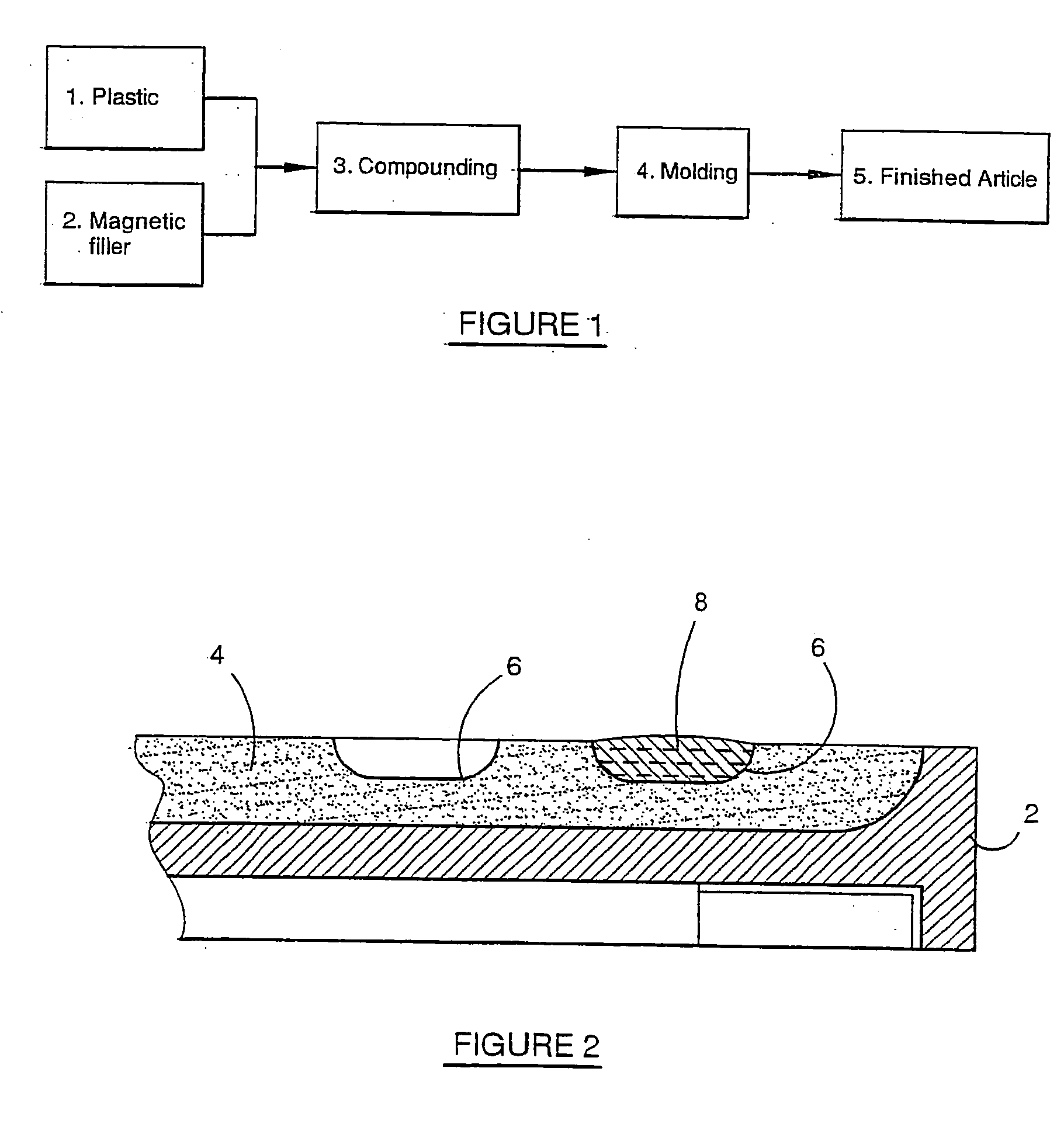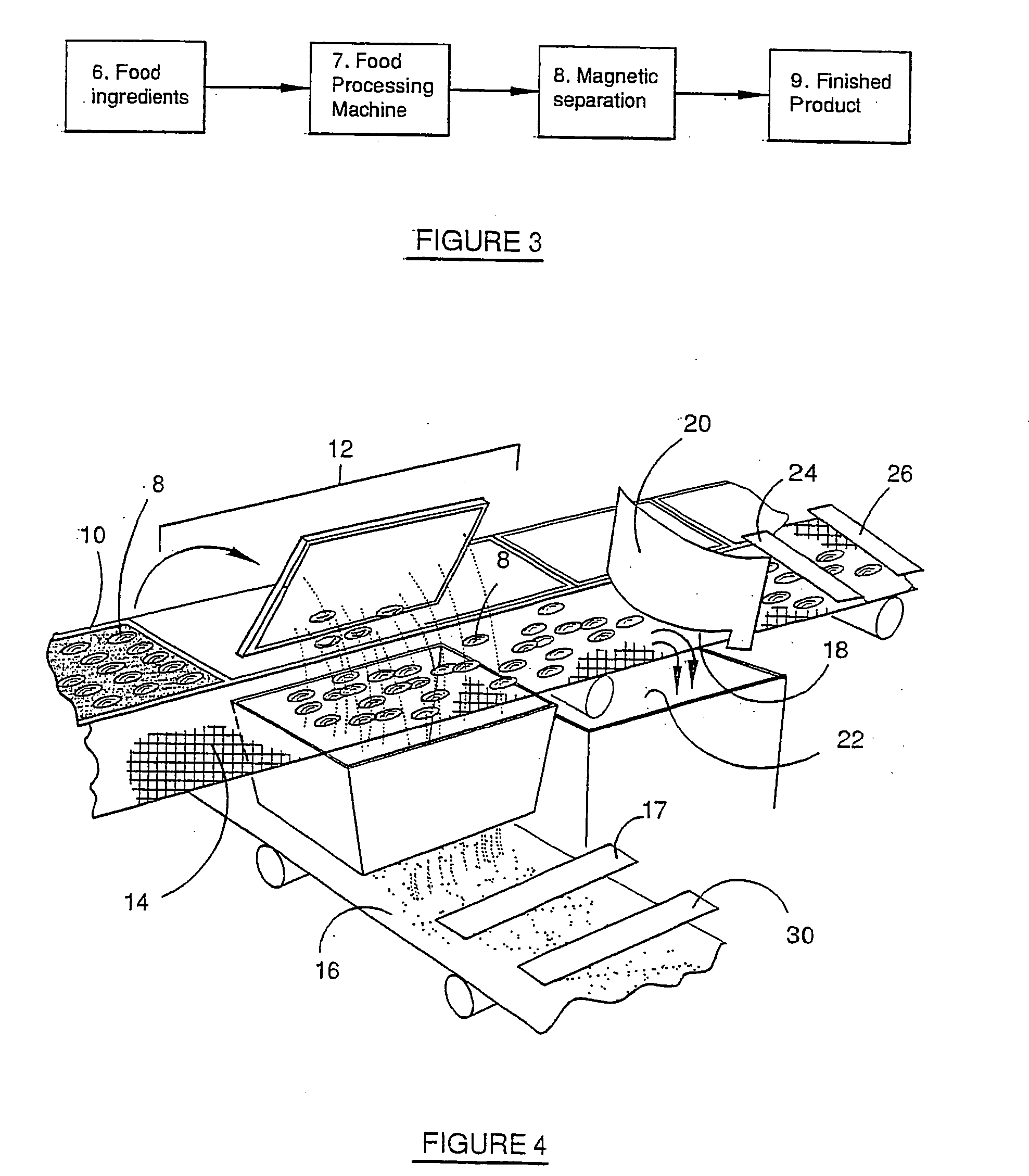Moulding composition
a composition and composition technology, applied in the field of moulding compositions and articles, can solve the problems of contaminating confections and starch, trays upon failure to break into fragments, and contaminating the starch
- Summary
- Abstract
- Description
- Claims
- Application Information
AI Technical Summary
Benefits of technology
Problems solved by technology
Method used
Image
Examples
example 2
[0020]
Polyester resin34%Jute fibres26%Magnetic filler (magnetite)17%Other fillers and additives23%
[0021] Both types of filler are mixed with the resin. The jute fibres are laid up as a mat 6 mm thick and immersed in the resin / filler mix. Excess is drained and the soaked mat is laid in the die cavity with the edges of the mat brought to the die edges. The die is closed and cured for 5 minutes at 150° C. The resulting tray weighs 3.5 kg and measures 800×400 mm.
[0022] In a variant, the shedding of fibres as a result of breakage is suppressed by placing on top of the wet mat a layer of woven fabric which has also been soaked in the same polymer / filler mix.
[0023] If thermoplastic trays are required, injection moulding is used instead with no reinforcement, only fillers are incorporated into the injected material.
example 3
[0024]
Talc filled polypropylene resin84%Magnetic filler16%
[0025] Trays moulded from this composition are much less brittle than trays made from thermosetting resin and tend not to chip. Accordingly, the fragments are larger and are completely collected by an electromagnet.
[0026] While strength is improved, shrinkage and distortion are reduced by the addition of a small quantity of glass fibre.
example 4
[0027]
Talc filled pp74%Magnetite16%Glass fibre10%
[0028] Magnetite is mined, ground and dried similar to talc, calcium carbonate and other minerals used in the plastics industry as fillers. It is available as a very fine powder with a mean particle size of 20 microns or finer and has a specific gravity range of about 5.0. Other particles may be used which also have a strong attraction to magnets, these include magnetisable metals, their alloys, their oxides and ferrites. The type of magnetic filler used is dependant on the application, consideration of cost and processing considerations.
[0029] Referring now to FIG. 2, the tray 2 is approximately 800×350×30 mm and is moulded in a compression die and cured between a pair of heated platens (not shown).
[0030]FIG. 3 is a generic block diagram representation of a food processing line, including food processing equipment, having one or more plastic components manufactured from a plastic material with a magnetic filler as shown in FIG. 1. ...
PUM
| Property | Measurement | Unit |
|---|---|---|
| concentration | aaaaa | aaaaa |
| diameter | aaaaa | aaaaa |
| thick | aaaaa | aaaaa |
Abstract
Description
Claims
Application Information
 Login to View More
Login to View More - R&D
- Intellectual Property
- Life Sciences
- Materials
- Tech Scout
- Unparalleled Data Quality
- Higher Quality Content
- 60% Fewer Hallucinations
Browse by: Latest US Patents, China's latest patents, Technical Efficacy Thesaurus, Application Domain, Technology Topic, Popular Technical Reports.
© 2025 PatSnap. All rights reserved.Legal|Privacy policy|Modern Slavery Act Transparency Statement|Sitemap|About US| Contact US: help@patsnap.com


